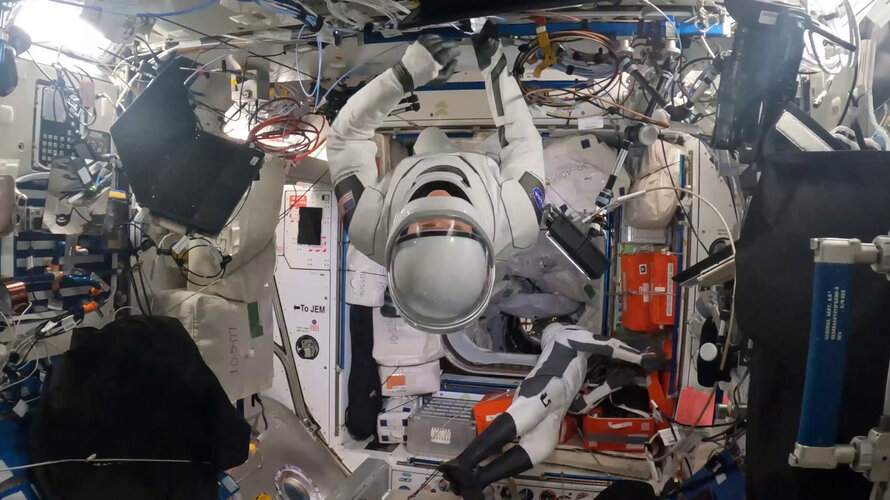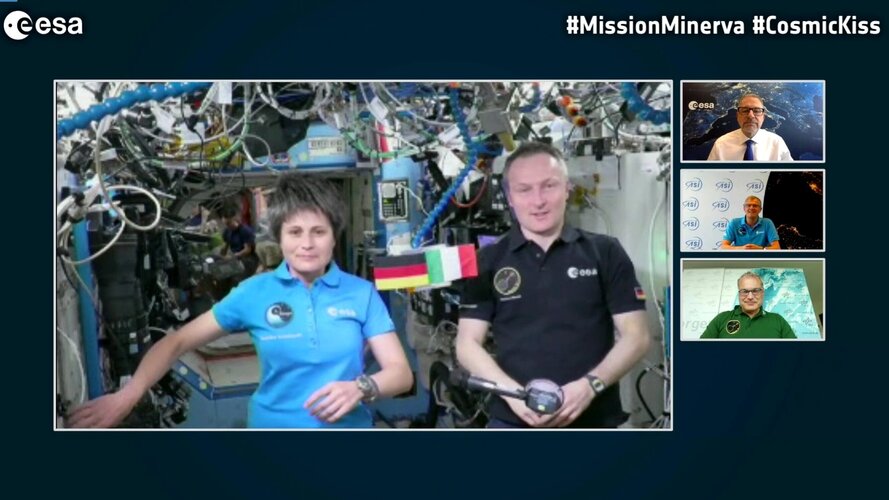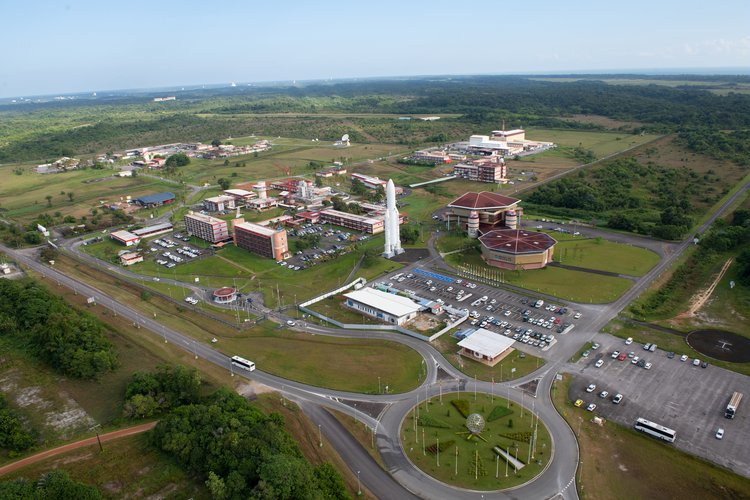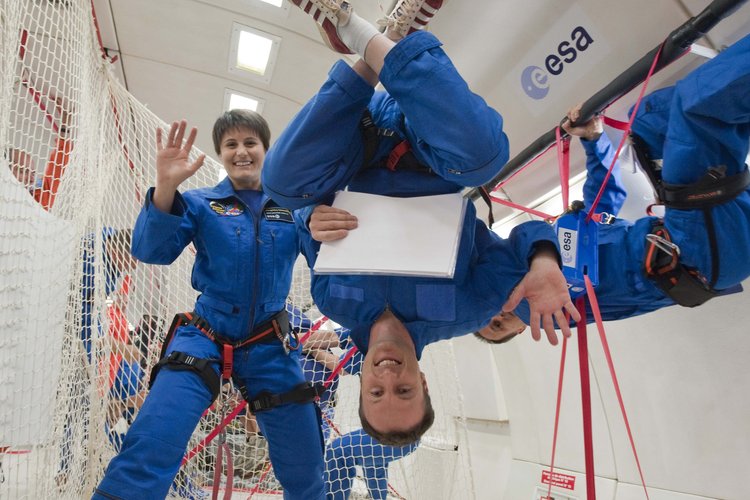
Copernical Team
China is building an asteroid deflection mission of its own, due for launch in 2025

There's an old joke that the dinosaurs are only extinct because they didn't develop a space agency. The implication, of course, is that unlike our reptilian ancestors, we humans might be able to save ourselves from an impending asteroid strike on Earth, given our six-and-a-half decades of spaceflight experience. But the fact is that while we have achieved amazing things since Sputnik kicked off the space age in 1957, very little effort thus far has gone into developing asteroid deflection technologies. We are woefully inexperienced in this arena, and aside from our Hollywood dramatizations of it, we've never yet put our capabilities to the test. But that's about to change.
Wu Yanhua, deputy head of the China National Space Administration (CNSA), announced last week that they plan to carry out an asteroid deflection test as early as 2025—part of a larger asteroid monitoring and defense system that the CNSA is in the early stages of developing.
Amid tensions on Earth, the United States claims that 'conflict in space is not inevitable'

In 1996, Joseph W. Ashy, former U.S. commander-in-chief of the North American Aerospace Defense Command, famously said: "We're going to fight in space. We're going to fight from space and we're going to fight into space."
In less than three decades since then, we've seen the establishment of the U.S. Space Force, anti-satellite weapons testing by major spacefaring nations and the rapid development of weapons that can interfere with, disrupt or destroy space assets.
No wonder there are many concerns about the potential of war in space. But the belief in the inevitability of space becoming the next major battlefield runs the risk of becoming, as space law expert Steven Freeland writes, "a self-fulfilling prophecy if care and restraint is not exercised."
It is therefore refreshing that, on April 18, U.S.
Spacesuit waltz| Cosmic Kiss
 Video:
00:01:27
Video:
00:01:27
Join ESA astronaut Matthias Maurer, and his Crew-3 mates NASA astronauts Kayla Barron, Raja Chari and Thomas Marshburn, as they check out their Crew Dragon launch and entry suits before they return to Earth.
The spacesuits are custom-made for each crew member and protect the astronauts from potential fire and depressurisation in the crew capsule. A single connection point on the thigh, connects the spacesuits to the life support system that supplies the astronauts with oxygen and power, as well as cooling and communication systems.
The suits are equipped with touchscreen-compatible gloves and a flame-resistant outer layer and can
Inflight call with Samantha and Matthias
 Video:
00:21:27
Video:
00:21:27
ESA astronauts Samantha Cristoforetti and Matthias Maurer, currently on board the International Space Station, discuss their brief handover with Josef Aschbacher, Director General of ESA, Walther Pelzer, Head of the German Space Agency at DLR, and Giorgio Saccoccia, Head of the Italian Space Agency ASI.
Samantha arrived at the Station with Crew-4 on 28 April 2022, marking the start of her second space mission Minerva. Matthias is coming to the end of his almost six-month-long first mission Cosmic Kiss. He is expected to return to Earth in early May aboard Crew Dragon Endurance as a member of Crew-3.
Europe's Spaceport: industrial service contract opportunities

ESA is inviting European space and non-space companies to get involved in the industrial service contracts of the French space agency, CNES, in its operational and maintenance activities at Europe’s Spaceport in French Guiana.
Watch live: joint call with ESA astronauts Samantha Cristoforetti and Matthias Maurer in orbit

What’s better than one ESA astronaut on the International Space Station? Two ESA astronauts on the Space Station! And they’ll be in conversation with ESA Director General Josef Aschbacher, Head of the German space agency DLR Walther Pelzer and Head of the Italian apace agency ASI Giorgio Saccoccia today.
Purdue and Duke Energy to explore potential for clean, nuclear power source for campus
 Purdue University and Duke Energy announced today (April 27) that they plan to jointly explore the feasibility of using advanced nuclear energy to meet the campus community's long-term energy needs.
With interest rising worldwide in new technologies that are reliable and carbon-free, Purdue and Duke Energy intend to study power produced through Small Modular Reactors (SMRs), a move that ma
Purdue University and Duke Energy announced today (April 27) that they plan to jointly explore the feasibility of using advanced nuclear energy to meet the campus community's long-term energy needs.
With interest rising worldwide in new technologies that are reliable and carbon-free, Purdue and Duke Energy intend to study power produced through Small Modular Reactors (SMRs), a move that ma In Einstein's footsteps and beyond
 In physics, as in life, it's always good to look at things from different perspectives.
Since the beginning of quantum physics, how light moves and interacts with matter around it has mostly been described and understood mathematically through the lens of its energy. In 1900, Max Planck used energy to explain how light is emitted by heated objects, a seminal study in the foundation of quan
In physics, as in life, it's always good to look at things from different perspectives.
Since the beginning of quantum physics, how light moves and interacts with matter around it has mostly been described and understood mathematically through the lens of its energy. In 1900, Max Planck used energy to explain how light is emitted by heated objects, a seminal study in the foundation of quan NASA scientist discovers new means to measure snow depth from space
 A NASA scientist is adding a new dimension to the climate-observing powers of a satellite instrument whose main mission is to measure the height of Earth's ice sheets and sea ice. And the inspiration for this new method comes from how ants walk around their colonies.
Using a concept adapted from the mathematics and biology communities, Yongxiang Hu of NASA's Langley Research Center in Hamp
A NASA scientist is adding a new dimension to the climate-observing powers of a satellite instrument whose main mission is to measure the height of Earth's ice sheets and sea ice. And the inspiration for this new method comes from how ants walk around their colonies.
Using a concept adapted from the mathematics and biology communities, Yongxiang Hu of NASA's Langley Research Center in Hamp Earth's atmosphere may be source of some lunar water
 Hydrogen and oxygen ions escaping from Earth's upper atmosphere and combining on the moon could be one of the sources of the known lunar water and ice, according to new research by University of Alaska Fairbanks Geophysical Institute scientists.
The work led by UAF Geophysical Institute associate research professor Gunther Kletetschka adds to a growing body of research about water at the m
Hydrogen and oxygen ions escaping from Earth's upper atmosphere and combining on the moon could be one of the sources of the known lunar water and ice, according to new research by University of Alaska Fairbanks Geophysical Institute scientists.
The work led by UAF Geophysical Institute associate research professor Gunther Kletetschka adds to a growing body of research about water at the m 